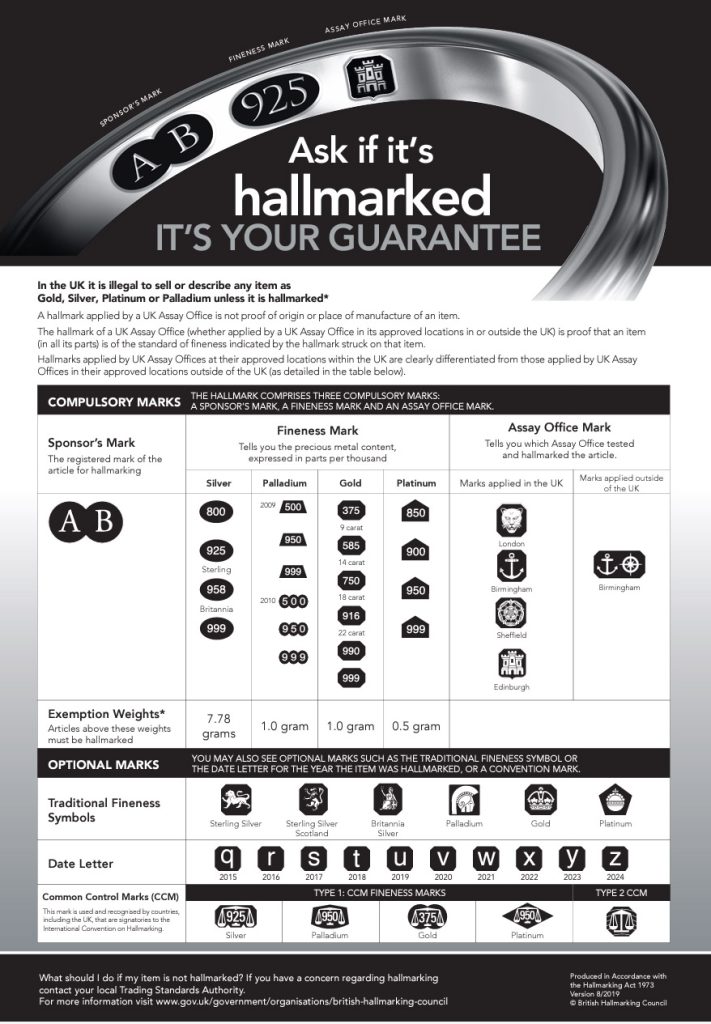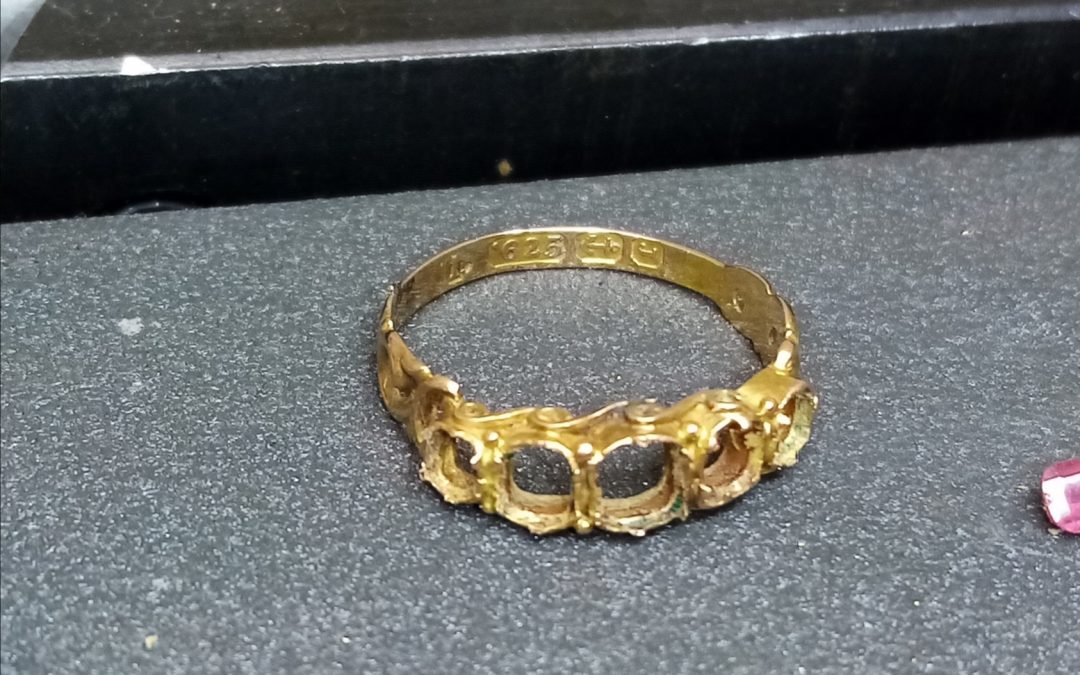I thought you might be interested to know a bit about UK jewellery hallmarks. So, first thing, hallmarking is really important because it’s your guarantee that what you think you’re buying is actually what it is and by law, all precious metal must be hallmarked. There are some exceptions, for instance, articles weighing less than 7.78g for silver, 1g for gold and palladium, and 0.5g for platinum do not need to be hallmarked.
A UK jewellery hallmark tells you: who made it, the year it was made, where it was hallmarked and the purity of the metal. The three compulsory marks are the makers mark, the Assay Office town mark and the purity mark.
I’m using Liz’s lovely old ring here as an example, unfortunately, when this was repaired, the makers mark had been soldered over, but you can still see the anchor (The Birmingham Assay Office mark) the fineness (.625) which is 15ct and the date mark which is a J in a shaped cartouche. Date mark letters are used over and over again, but time it’s used it will be a different font inside a different shape cartouche. If you go to Birmingham Assay Office website you can search date letters from 1773. The date mark on Liz’s ring is from 1858-59. My work is hallmarked at the Edinburgh Assay Office, whose mark is the castle.
You can find out more about UK jewellery hallmarks on the hallmarking notice below.


